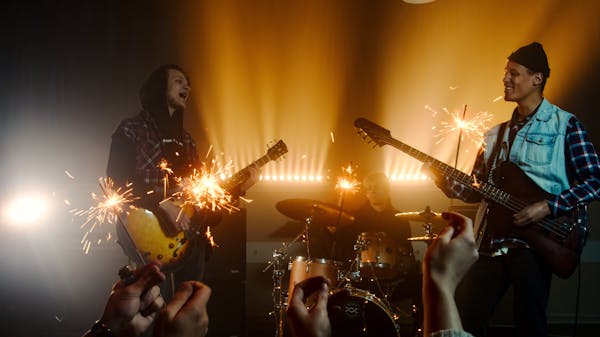Performers interpret, modify, and add to a composer’s original blueprint (or score) in a music performance. This constant reinterpretation allows listeners to enjoy a variety of different performances of the same piece of music.
Expert listeners are often able to distinguish between performances that differ in phrasing, articulation, and vibrato from each other. However, objectively measurable differences in these characteristics do not always translate into structurally meaningful expressive variation. Discover more at The Eagles Concert Las Vegas.
Origins
Music has been a part of human activity for millennia. In a number of cultures, the sounds have been used as rituals or for entertainment. Whether a soloist captivates a hushed audience with her breathtaking technique or musicians blend their voices and instruments in perfect harmony, musical performance is a celebration of human creativity and collaboration.
The origins of musical performances are complex and hard to pin down. Historians and ethnomusicologists often cite two primary sources of sound in humans: the sounds heard by the fetus in the womb and emotionally generated vocalizations.
Many cultures have developed different mediums for presenting music to listeners, from chanting to percussion instruments to stringed ones. Traditionally, Westerners have expected that musical performance involves live presentations before a physically present audience. However, with the proliferation of recorded and electronic music, that expectation has been challenged.
Purpose
The motivation to perform music is a profound human drive. It can be attributed to the many rewards it brings, including mastering complex musical pieces, connecting with an audience, and building a sense of pride in one’s craft.

Regardless of the initial impetus, whether score transmission or improvisation, high-level performing is always a constant re-interpretation of the given blueprint (or score). This re-creative performance involves reading and decoding printed symbols in imagery, transforming them into motor patterns, reproducing stored procedural knowledge, and exploring new musical configurations through continuous and focal sensory feedback.
As such, it may provide valuable insights into the deep interaction of perception, action and cognition. A holistic approach encompassing the sensorimotor aspects of performance should help to illuminate the fundamental processes that underlie skilled behavior, and offer a new theoretical framework for embodied cognitive science.
Techniques
In addition to technical proficiency, music performance techniques can help musicians connect with their audience and create a more polished and engaging performance. They can include posture, facial expressions, body movement and stage banter to communicate emotion and enhance the performance.
Musicians can develop their performance techniques through practice and repetition, seeking feedback, analyzing recordings, studying with other musicians and attending workshops and masterclasses. In addition, practicing performance-focused techniques such as mental rehearsal and performing pieces without stopping are useful tools for preparing for performances. These techniques can reduce performance anxiety and increase confidence. They can also improve muscle memory and enhance musicality. For example, playing pieces over and over can help musicians learn to read scores more quickly and accurately. It can also help them to better understand the meaning and structure of a piece.
Styles
The style of music performance is a major component of how a song is perceived. Even when the blueprint is identical, listeners tend to prefer one rendition over another based on differences in tempo, dynamics, and phrasing. This re-interpretation is an inherent part of the art form and helps to define its value.
Musical genres are often based on styles, but their categorizations can be highly subjective and arbitrary. The ways that musicians and listeners divide the landscape into categories can also be influenced by social boundaries, such as those based on gender or race.
Researchers have analyzed different aspects of music performance to understand the underlying rules that lead to stylistic variations. For example, Busse compared expert listener judgments on swing-style performances of jazz piano melodies that were either unaltered or modified according to various timing models.
Audience
It is the audience that makes a live performance exciting or boring. A performance that has the audience cheering and singing along can be exhilarating. On the other hand, a performance that does not get the audience’s attention can be deflating and disappointing for the performers.
The ability to “engage” the audience is a skill that some musicians possess more than others. Some pianists (I am one) have this charisma – that unquantifiable ability to “get the audience behind them”. Examples include Horowitz and Arthur Rubinstein, among many others.
It is possible to encourage social flow in the audience through the performance design process by including PERMA elements from positive psychology (see here for a review of this). In addition, the entrainment effects caused by music can create a sense of collective engagement with the performers and with the music itself.